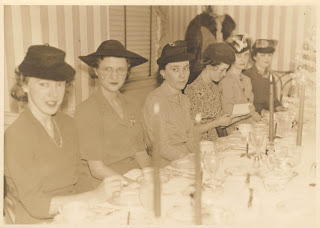The King Library Press was
officially founded in 1956 by Carolyn Reading Hammer (whom later became UK Libraries’
curator of rare books). Carolyn Hammer
was influenced by the Gravesend Press of Joseph C. Graves and also Victor Hammer,
to whom she was married. Victor Hammer,
a Viennese artist and typographer, designed a number of uncial form types, the
best known of which remains the popular American Uncial.
Victor Hammer began
printing in Florence in the 1920s, where he had an antique-style wooden press
constructed. Victor Hammer built the
press with the help of local Florentine craftsmen in 1927. Based on a press in
the Laurentian Library, it was first used to print John Milton’s Samson
Agonistes. The book was set in Mr. Hammer’s second uncial and christened
Samson. Punches for the type were cut by Paul Koch, Rudolf Koch’s son. Samson
Agonistes was issued in an edition of 103 copies. In 1933 Hammer closed his
studio in Florence and the press was stored. In 1954 it was moved to the
University of Kentucky where it was first used by the King Library Press in
1959.
 |
|
Members
of the Bur Press in the mid 1940s — artist Harriett McDonald Holladay, printers
Amelia Buckley and Carolyn Reading Hammer, and hand bookbinder Mary Spears Van
Meter.
|
However, Amelia Buckley
and Carolyn Hammer had been printing at their Bur Press since 1943. When they
decided to close operations at the Bur Press their Chandler & Price
printing press which had been located at Hammer’s studio in Bullock Place, was
moved to the basement of the King Library - which then held the Acquisitions
Department - together with type, equipment, and paper.
Victor Hammer and a
group of friends formed the Anvil Press in 1952. Victor designed the books for the press and
Jacob Hammer was the pressman. Eventually this press was also donated to the
University.
 |
|
Library Staff Christmas
Dinner; From left to right: Carolyn Reading Hammer, Catherine L. Katterjoler,
Jacqueline P. Bull, Mary Jane Stallcup, Maona Shinkle Eaves, and Daisy Taylor
Croft, 1940
|
Carolyn Hammer, Nancy
Chambers Lair, Stokley Gribble, and Mary Voorhes had been printing some
book-plates and small pieces on the press in the basement of the King Library
but wanted to do something more substantial.
They started working at the press on their lunch breaks at noon. The first book they printed was The Marriage of Cock Robin and Jenny Wren
in 1956. They first named the press,
High Noon Press but then attributed it as the King Library Press. At the time, they printed for the sheer
pleasure of printing.
Hand-set type is set
piece by piece, letter by letter, and by hand. Every piece of type for each
letter is separate and it is used over and over again. After each use it is
returned to a specially-designed case, which has larger compartments near the
front so that the most-used type is more accessible. The paper that is used for
printing is hand-made and some of the finest available.
Joe Graves’ Gravesend
Press, is also a part of the King Library Press. There are also more modern presses including
a Vandercook SP15, a gift of the Harrodsburg Herald, a Vandercook Universal I,
and several by Chandler & Price.
 |
|
Picnic at Gethsemane;
Carolyn R. Hammer, 1967
|
The King Library Press
is located in Special Collections of UK Libraries and is directed by Dr. Paul
E. Holbrook. The work of the Press – hand
setting type, printing on antique presses, and binding – is done by student
interns and staff volunteers. The
objective of the Press is to preserve and demonstrate historical printing
techniques using period equipment and methods.
“The press gives those
working with it a historical understanding of the book,” said Paul A. Willis, former
director of UK Libraries. “It adds an element of distinction to the library and
University which I hope we are able to maintain.”




No comments:
Post a Comment